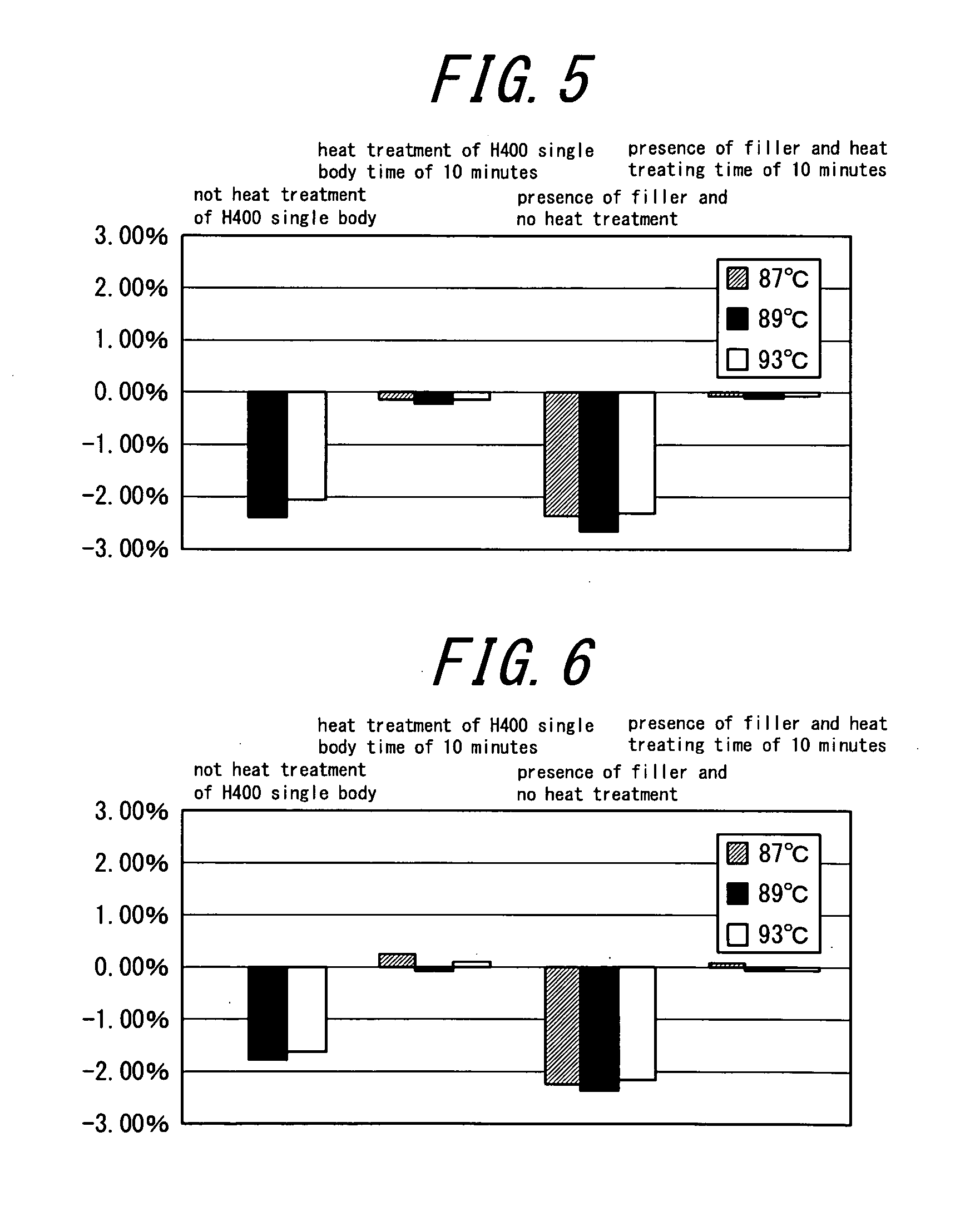Heat-resistant poly-l-lactic acid preform
a polylactic acid, heat-resistant technology, applied in the field of preforms, can solve the problems of no temperature stability, long shaping cycle, slow crystallization rate, etc., and achieve the effect of improving crystallinity, good heat resistance, and improving heat resistance in the mouth portion
- Summary
- Abstract
- Description
- Claims
- Application Information
AI Technical Summary
Benefits of technology
Problems solved by technology
Method used
Image
Examples
example 1
[0034]As a polylactic acid resin is used a polylactic acid of a grade having a slow crystallization rate (PLA) (LACEA H440 made by Mitsui Chemicals, Inc.). On the other hand, a functional filler is used by graft-polymerizing pentaerythritol having 4 functional groups with 50 molecules of D-lactic acid. A preform is prepared by adding 10% of the functional filler to PLA. Then, a mouth portion of the preform is crystallized to confirm its heat resistance.
[0035]Moreover, the crystallization conditions are as follows:[0036](1) Preform: 500 ml[0037](2) Temperature set in a heater: 300→490° C.[0038](3) Heat treating time: 5 minutes or 10 minutes[0039](4) Temperature of a mouth portion at an outlet of a furnace: 81-126° C.
[0040]A sample used in this test is as follows:[0041](1) H440 single body (no heat treatment)[0042](2) H440+10% filler (no heat treatment)[0043](3) H440+10% filler (heat treating time: 5 minutes)[0044](4) H440+10% filler (heat treating time: 10 minutes)
[0045]Moreover, the...
example 2
[0048]The polylactic acid or H440 used in Example 1 is a product consisting essentially of L-lactic acid and containing about 5% of D-form. Moreover, it is known that a slight amount of D-lactic acid contained in the poly-L-lactic acid influences on the crystallinity. Now, in order to examine the relationship between the crystallinity and the heat resistance of the polylactic acid resin, LACEA H400 made by Mitsui Chemicals, Inc. having a D-form content of about 2% and a high crystallinity is used to conduct the examination of the heat resistance in the same manner as described above.
[0049]A sample used in this test is as follows:[0050](1) H400 single body (no heat treatment)[0051](2) H400 single body (heat treating time: 10 minutes)[0052](3) H400+10% filler (no heat treatment)[0053](4) H400+10% filler (heat treating time: 10 minutes)
[0054]The results are shown in FIGS. 5-8. Even in H400, the high heat resistance is confirmed even in the heating at 87° C., 90° C. or 93° C. by conduct...
example 3
[0055]A material obtained by adding an organic filler to H400 and a material obtained by adding an organic filler to H440 are extruded into pellets by a biaxial extruder, respectively, which are examined by a differential scanning calorimetry (DSC). As a measuring device is used Plyris-DSC7 made by Perkin-Elmer. The measuring temperature is adopted as room temperature (30° C.)→250° C. in the system added with the filler and as 30° C.→190° C. in the system not added with the filler. The temperature rising rate is 10° C. / min. Further, the functional filler is used by graft-polymerizing Aerosil silica 300, PEG 600, trimethylol propane or pentaerythritol with 10, 30 or 50 molecules of D-lactic acid, respectively. The results on H400 are shown in Table 1, and the results on H440 are shown in Table 2.
TABLE 1AmountAmount ofofD-lacticfilleracid graft-com-Melting point (° C.)MaterialpolymerizedpoundedTm1Tm2Tm3StartingH400166.3materialBlendAerosil silica305162.8168.7206.3300molecules10165.719...
PUM
| Property | Measurement | Unit |
|---|---|---|
| temperature | aaaaa | aaaaa |
| Tm | aaaaa | aaaaa |
| temperature | aaaaa | aaaaa |
Abstract
Description
Claims
Application Information
 Login to View More
Login to View More - R&D
- Intellectual Property
- Life Sciences
- Materials
- Tech Scout
- Unparalleled Data Quality
- Higher Quality Content
- 60% Fewer Hallucinations
Browse by: Latest US Patents, China's latest patents, Technical Efficacy Thesaurus, Application Domain, Technology Topic, Popular Technical Reports.
© 2025 PatSnap. All rights reserved.Legal|Privacy policy|Modern Slavery Act Transparency Statement|Sitemap|About US| Contact US: help@patsnap.com



